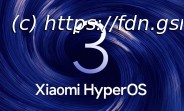Ethereum has attracted broad interest from both hackers and corporations with its updates on Bitcoin.
Bitcoin has many cousins and competitors. None have grown more popular than Ethereum, a global computer network with its own virtual currency, called Ether.
Ethereum is a global computing network operating according to rules defined by Ethereum software.
Those rules allow the Ethereum network to be programmed to complete certain types of computing tasks, with every computer on the network completing the task in parallel to ensure it is done correctly. Generally the tasks involve money.
The creator of Ethereum, Vitalik Buterin, has likened it to a global smartphone that can be programmed to operate according to the apps built on top of it. The apps are called Dapps because they are run by a decentralized network of computers.
Mr. Buterin says he chose the name because it refers to “the hypothetical invisible medium that permeates the universe and allows light to travel.” He announced Ethereum in late 2013, but it didn’t go into operation until 2015.
The Ethereum network has its own virtual currency, Ether. In the simplest sense, Ether are needed to pay the other computers on the network to complete tasks. It isn’t free to use the network.
People have also decided to buy and hold Ether, betting that it will become more valuable as more people want to use the network and need Ether to pay for the network’s computing power.
Mr. Buterin was a Bitcoin aficionado, and he was inspired by its success. But he set out to build something that could do more than Bitcoin: He wanted to build a system that would make it possible to program more complex financial transactions.
The shared records of the Ethereum network — of every transaction and computation it has ever performed — are known as a blockchain, just as the shared records of all Bitcoin transactions are known as a blockchain. But Ethereum’s blockchain database is totally independent of Bitcoin’s blockchain.
Let’s say two companies want to conduct a complicated financial transaction, like settling a stock option. Neither company trusts the other company to conduct the transaction on its computers. Both companies could hire a third party, like a stock exchange, to conduct the transaction, which is what they generally do today.
But that forces them to trust that third company and to pay that company fees. With Ethereum, they can conduct the transaction on a shared computer that allows them both to check the records, ideally saving on fees.
As this example suggests, Ethereum has proved attractive to financial companies that have to complete lots of complicated financial transactions with competitors they don’t trust. Many banks are looking at how Ethereum could be used as a central operating system for various trading markets, replacing today’s exchanges and middlemen. JPMorgan Chase has even created its own version of Ethereum, known as Quorum.
Other companies, like Samsung and Toyota, have experimented with Ethereum as a way to keep track of products moving through supply chains that involve many players.
Dozens of large companies around the world came together this year to create the Enterprise Ethereum Alliance. The group is working to develop versions of the Ethereum software that are battle tested enough to be used in a corporate setting.
The versions of the Ethereum software that companies are building will most likely be used to set up private networks that would be totally separate from the public Ethereum network and that would not use the Ether currency. Some people, though, are betting that these private networks will eventually be plugged back into the public network.
Just as with Bitcoin, you can buy Ether from people who already own them on virtual currency exchanges. Most large countries have exchanges where a variety of virtual currencies can be bought with the local currency.
Just as with Bitcoin, Ethereum are “mined,” or created by computers joined into the Ethereum network. These computers are in a race to complete the transactions and computing work on the network. The faster your computers, the more likely you are to win the race and receive a bundle of new Ether. There is generally a new winner every 15 seconds or so.
It has not yet been decided how many Ether will ultimately be distributed, but the number is likely to be around 100 million. So far, 94 million have been distributed.
As with Bitcoin, Ethereum mining serves a dual process of getting new Ether into the world while providing an incentive for people to join the network and help maintain the Ethereum blockchain.






